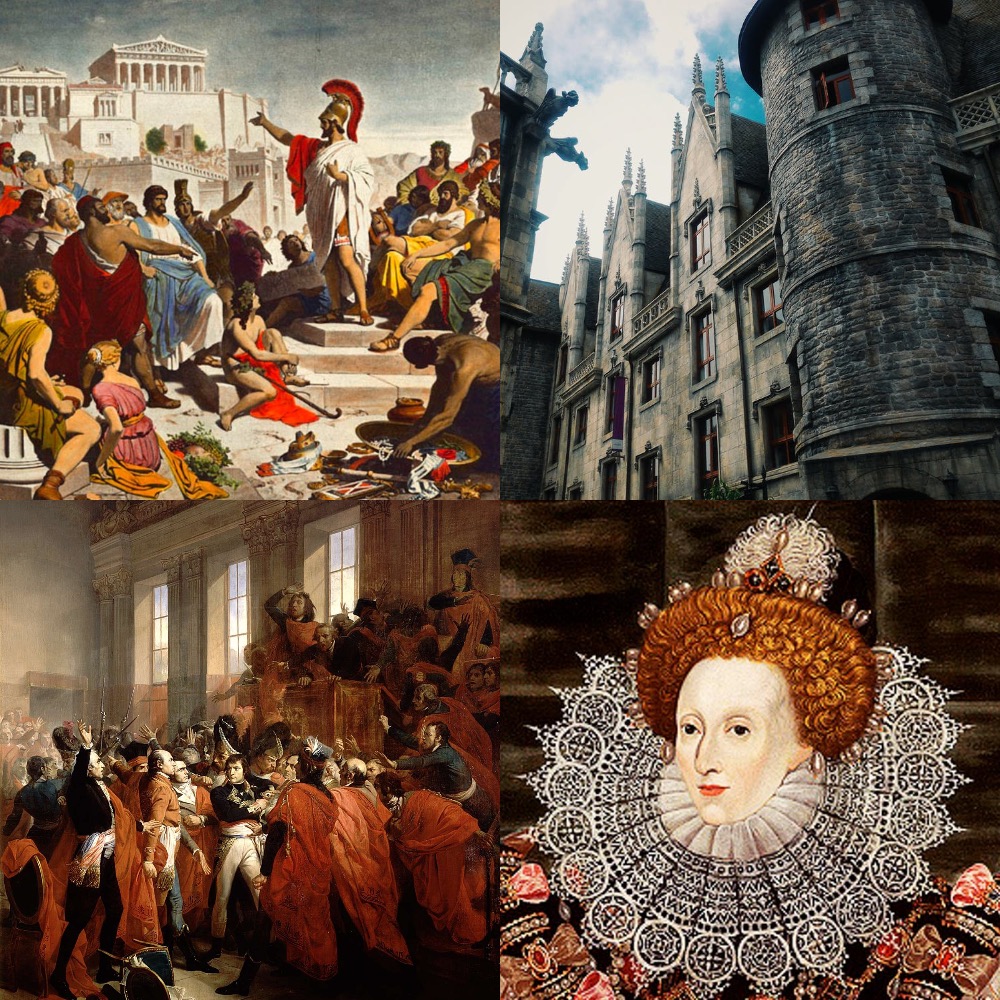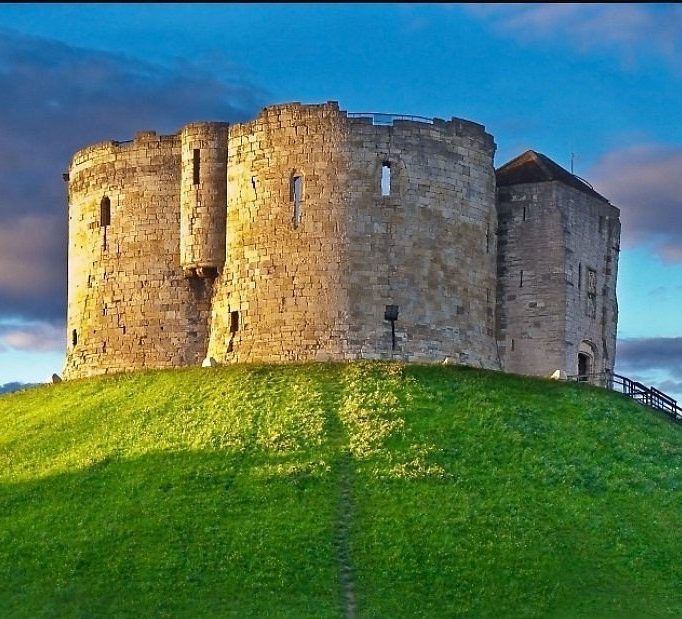
From the dawn of civilization, humanity has found itself in times of both growth and conflict. It is said that we began as hunter gatherers within more tribal systems. With the emergence of agriculture, working the land to grow food has created the ability for people to settle down in places across the globe, founding villages, towns, and cities. From here, counties, duchies, and kingdoms made their entrance, creating systems of rule and governance for the time. With growth, comes opportunity for a region to grow in prosperity, wealth, and society.
However, some opportunities in this wild world of early humanity are more nefarious than others. Perhaps a rival kingdom seeks to conquer an enemies land for its natural resources. Bands of thieves and raiders may endanger those living on the countryside, taking food and valuables. With an increasing number of threats, there was a need for defense and fortification to protect the holdings of the local ruler.

Ancient Cities and Hill Forts: A Pre-History
Early fortifications took the form of walls and towers surrounding villages and cities, meant to protect these centers of economic activity from raiders and bandits, and to provide defensive measures against enemy armies. These first appeared in some of our oldest civilizations, such as the Indus Valley, Fertile Crescent, China, and Egypt.
By the Bronze Age, hilltop fortresses were built. These fortresses served as independent strongholds meant to provide higher protection against forces on the ground below, providing a larger scouting range, and serve as a station for soldiers to better protect the farmlands around them. While this first appeared in the East, it eventually made its way to Europe by the Iron Age.
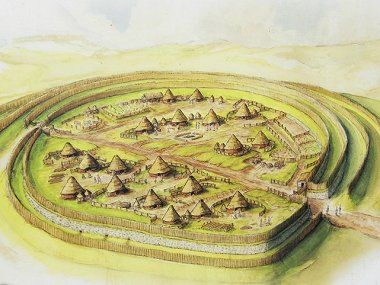
Through this time, while eastern forts first used stone walls, most European forts leveraged earthworks and unique landscaping to defend positions. It was not until the time of the Roman Empire that fortifications (refered to as “castra”) had ranged from temporary earthworks thrown up by armies on the move, to permanent stone buildings which provided station for soldiers for the long term.
Motte and Bailey: Defensive Earthworks
After the fall of the Roman Empire, trade and stability collapsed under the weight of a power vacuum. Romes splintered soldiery could no longer maintain control of its roads and its people, leaving its many populations to rely on what their land provided them for defense. While the construction of the Roman Empire stood the tests of time, mass migrations, contests for territory and resources, and shifts in the sociopolitical order required groups who were not experts in roman engineering to establish their own safety and security.
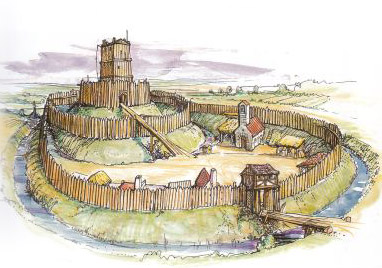
While the idea of using mounds of earth and walls of timber was practiced for centuries, the world post-Rome had seen an explosion in what were known as “Motte and Bailey” forts.
The idea was simple. A hilltop, either natural or artificial, hosted a keep or main defensive building housing an estate by a lord or local leadership structure. The steep elevation made assaulting the keep difficult. Below the hilltop keep, a ramp, bridge, or stair leading down to an enclosed green where cottages and trade houses sat, a population of people living and working in relative safety. This provided multiple layers of defense, along with the support of a community who could work off the land resources.
Nearly all “Motte and Bailey” were made of timber. In essence, the word “motte” means “cod of earth” and the word “bailey” means “enclosure”. The most plentiful resource to ensure the enclosure came from the forests around them. Overall, it is said that 9/10 castles that existed in history were made of wood. Very few survive today, while despite how widely the structure was built, they did not take long to deteriorate. Still, in a time as turbulent as the emergent dark ages, Motte and Bailey served as a convenient and stable source of safety for a time.
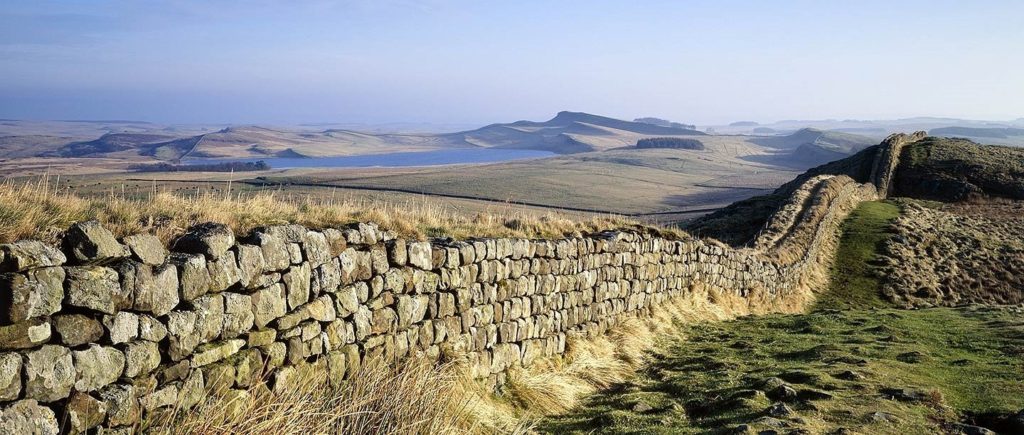
Fall of the Roman Empire, and Rise of Castles
Castles served three main purposes; for defense to hold ground, to protect the people inside; and to display the owners rank and wealth. They were often placed on hilltops or surrounded by water to make them easier to defend. The first castles were built by the Normans from France during their invasion of Britain, in the 1000s, and were built until around the 1600s. The word “Castle” comes from the Latin word for “fortress”.
As new orders rose, new lines in the dirt were drawn, and peoples settled for long term, these organizational structures needed to consider longer term defense of their lands. Over time, the remains of old Roman forts served as inspiration for the beginning of the castle age; one grounded in stone.
The largest influence in the rise of ”castles” came as a reaction to attacks from armies from outside mainland Europe, by peoples such as the Vikings, the Moors, and Magyars. Because of their conquering and destabilization of larger kingdoms and regions, local lords assumed control of land holdings, meaning that it was up to them to fortify their estates.
War was common in these times, and much of the unrest shifted from outer armies, to that between these lords who had established control over these smaller regions for themselves. Thus, the “castle’ made for the best structure to defend their holdings against most threats.
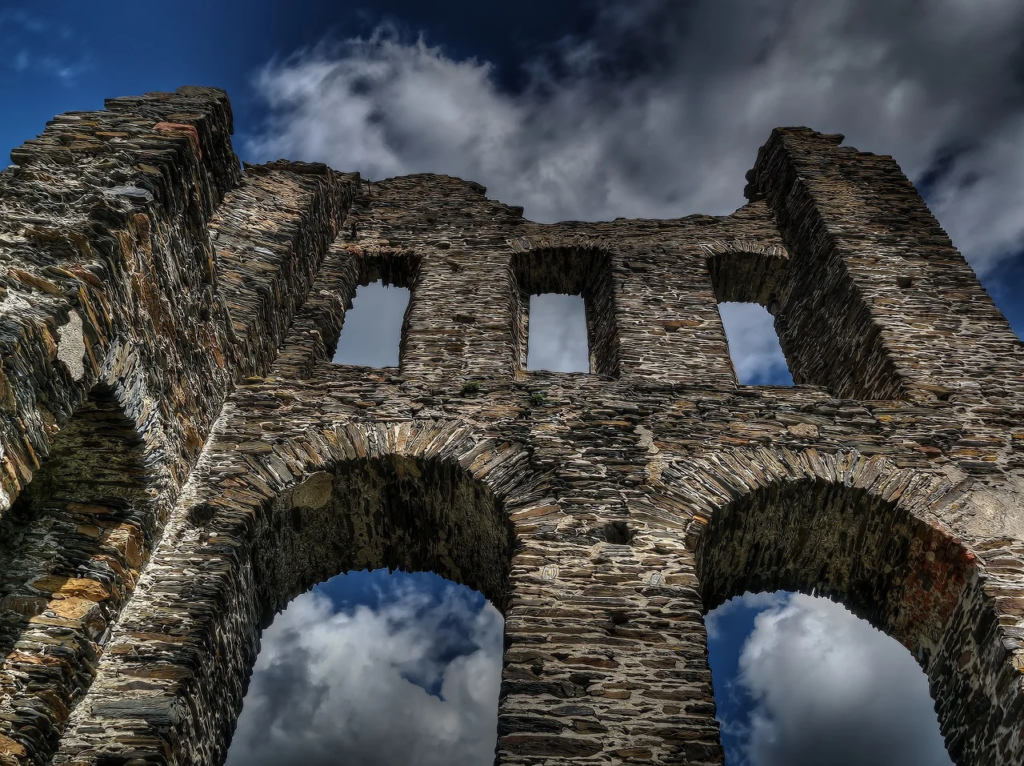
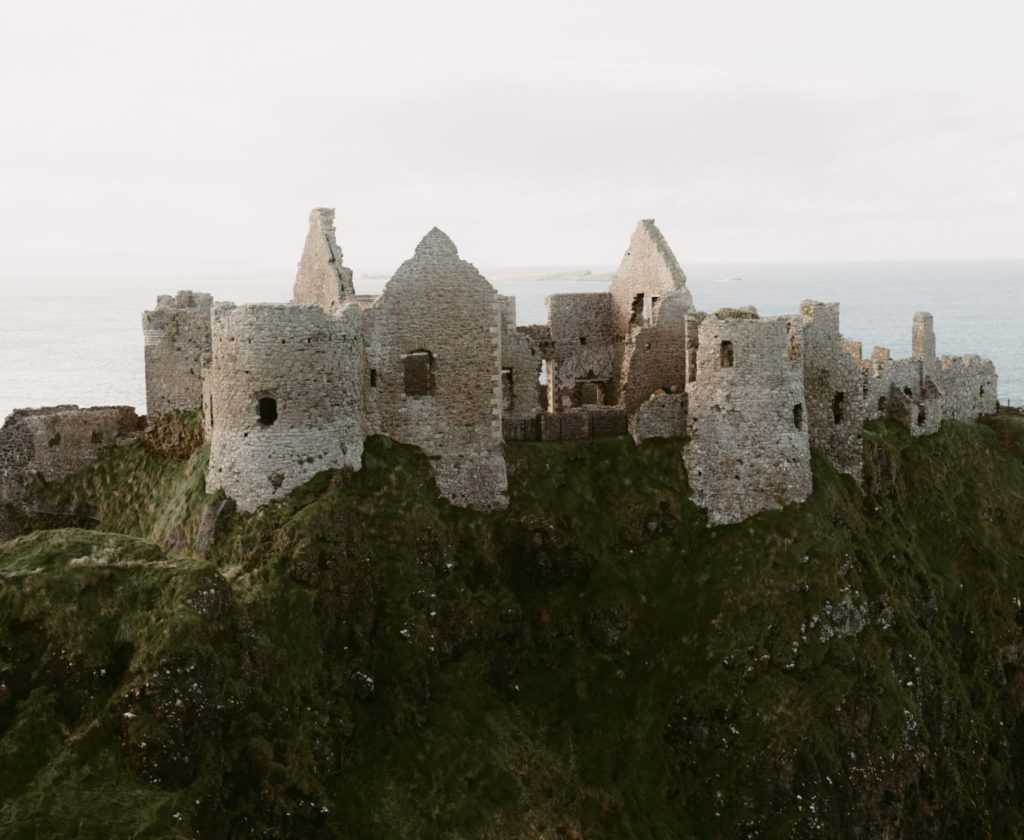
Early Castle Age: Stone Castles
In the 12th century, many castles were improved and strengthened by using stone as the building material. Even though timber was strong against spears and arrows, fire could render it useless. Stone castles were built taller and gave better protection against projectiles, fire and cold rainy weather. Stone is more durable and resistant than wood and so it became the preferred building materials for castles. Quarries sprung up to gather stone of various composition and strength to ensure they would withstand attack.
Over time, towers became a part of its defensive design, integrated into the walls itself, providing a built in method of surveying the land around for early warning of coming threats. Rectangular towers and walls were common until the 14th century, when castle keeps began employing rounded.
Earthworks were employed more heavily in the areas surrounding the castle, providing steep drops and inclines below the base of the stone. Some leveraged nearly lakes or streams to fill these trenches and make them into moats.
However, these structures did have their drawbacks. Aside from slinging arrows and dropping stones, there were not many ways for defenders to strike at their attackers. These castles were also susceptible to catapults. Undermining was also a tactic used against these structures, which involved mining into the base of the stone, and setting wooden props beneath the overhanging masonry to be set aflame. As times changed, so did the tactics used to fortify against evolving threats.
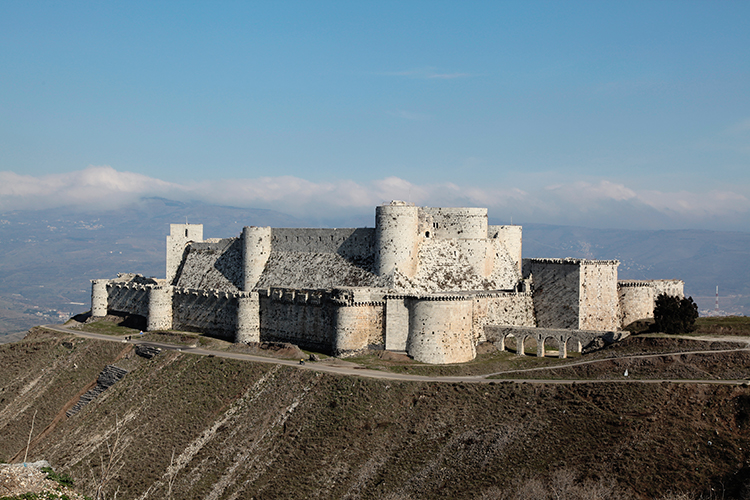
Middle Castle Age: Castles During the Crusades
Pope Urban II, in response to reports of attack in the east near Constantinople, called upon those who were faithful to the Catholic Church to gather those of fighting stature to send armies to the Holy Land. While the history of this era is filled with all sorts of folly and atrocity, no doubt these massive campaigns drove a new era of military and defense.
As knights and soldiers from the west clashed with the warriors in the east, the designs of castles saw a rapid advancement. Engineering principles from both worlds merged into a new set of standards for defense, providing less reliance on the central keep, and employing such things such as curtain walls that provided multiple rings of defense against sieges. Castles which comprised of inner and outer rings of walls were known as “Concentric Castles”, and these dominated the lands of Europe and the Middle East.
Other defensive improvement, such as arrow-slits, machicolations, and “square plan” layouts were widely adopted in crusade regions before spreading to other areas. Battlements were better designed to support cover from arrows, catapults, ballistas, and other weaponry.
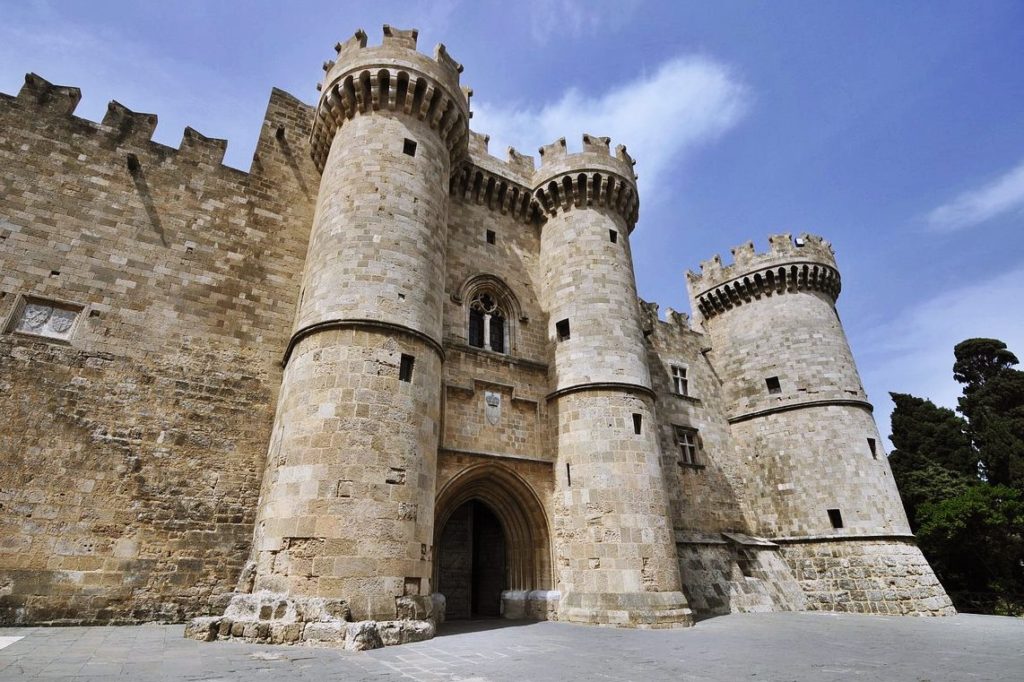
Castles During the Time of Knightly Orders
In the 13th century, most castles were built not by individual estate holders, but by Military Orders who were both funded by the Catholic Church, and who functioned as financial organizations amongst themselves. Such orders included the Knights Hospitaller, the Knights Templar, and the Teutonic Knights. Each set out to secure their own front in the battle against groups were the target of their Holy Wars.
After the crusades (14th Century), castle construction continued, driven by kings and prices of regions bordering contested areas. Generations of warring knights, soldiers, and engineers fueled the military spheres and fronts of various wars which erupted across the world between areas such as Britain, Spain, Prussia, Germany, Syria, and Ottoman Empire.
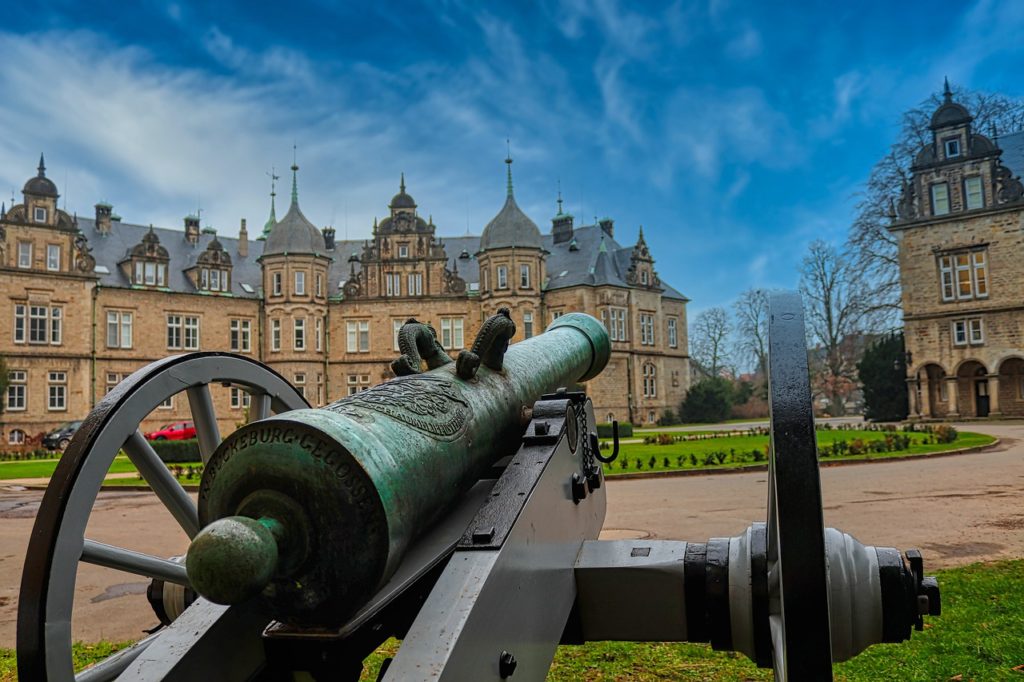
Emergence of Gunpowder and Cannons
In the world post-Crusade, where peoples and worlds collided, many traders and explorers sought to explore far more exotic regions. In their exploration, they discovered designs and inventions from places such as the far east. One such invention came in the form of gunpowder weapons. As they emerged in the 14th century, its knowledge spread quickly, resulting in the creation of artillery, canons, and guns. With this came new modes of warfare, and new challenges for defense.
One of the most notable battles which occurred during this era was the Fall of Constantinople by Mehmed II, which was largely contributed by the emergence of canons as siege weapons. In the wake of this invention, the long standing traditions of castle construction were shattered, but not obsolete.
Gun ports replaced arrow slits, shaped as a keyhole to provide a wider range of fire. Larger guns became alternatives to siege weapons like the trebuchet, with greater range and power. With greater firepower, thicker walls were employed in the struggle to stop canon fire. Rounded towers were designed to better deflect oncoming rounds. Earthen banks were again employed into the design of castles, better suited to cushion impact.
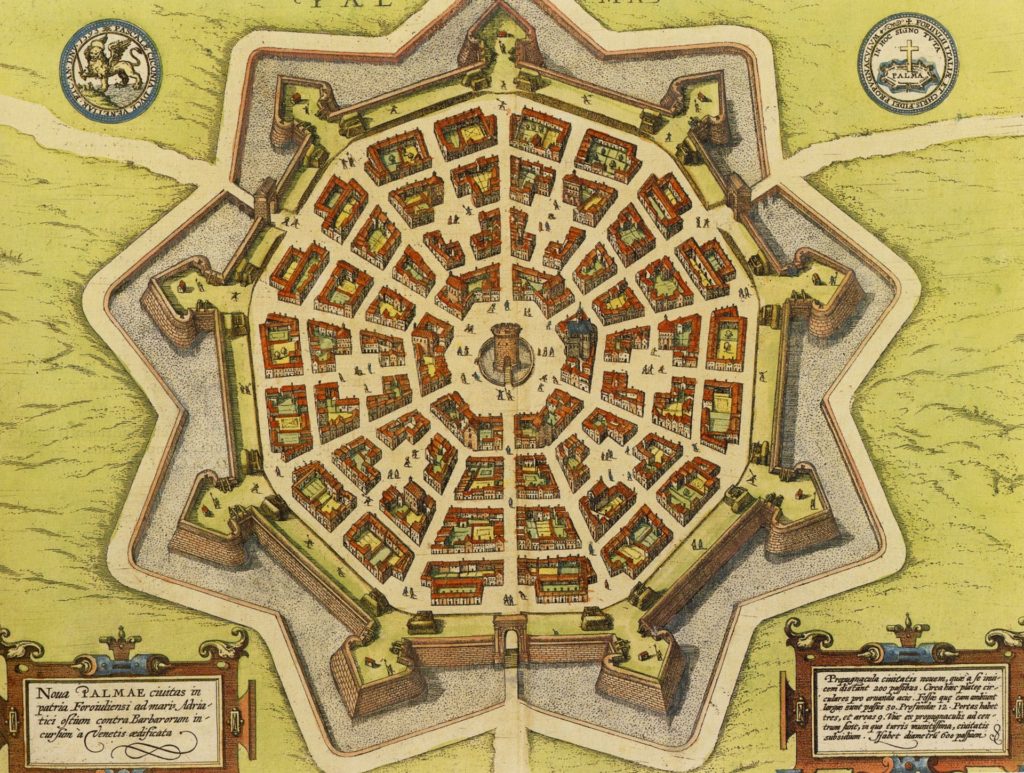
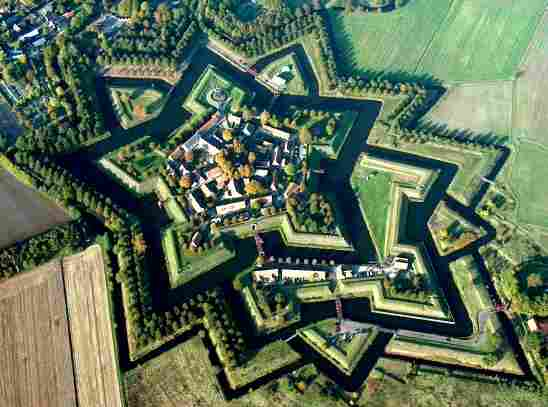
Late Castle Age: Star Forts and Artillery
In the 16th century, the angled bastion was developed in Italy. Permanent artillery forts took over the defensive roles of castles, as the longer range of attack allowed for more selective placement. What emerged were known as Star Forts. These were less secure to direct attack, but offered aesthetic value to an army, and served as a status symbol. This was because there was little point making the site genuinely defensible against canons, while their placement did provide a large sphere of remote assault in the event of war.
The Americas saw some of the first true forts in this style, built by the Spanish and French. In the high time of colonialism, these castles did serve as value to expanding nations who wished to defend their colonies against rivals on the high seas, as galleons with cannons were the standard method of attack in these times.
However, over time, the military application of castles began to fade. While fortification was still useful during war, they more often were retained for administrative uses, and were considered a significant status symbol for royalty and the wealthy. This change from a military asset to one of a status symbol marked the end of the castle age, but the beginning of a revival for much more luxurious purposes.
Estates of Majesty: A Rebirth of Castles
The early enlightenment was an age of scientific discovery, high art, evolving military strategy, and absolute monarchs. Many castles left use as their military application faded in these recent centuries, unable to withstand ever advancing weaponry. This altered the fate of castles forever, moving them into a mark of status and majesty.
Many still standing castles were inherited and renovated by families of renown, wealth, and nobility. Others built country houses whose designs hearkened back to traditional castle architecture. However, some true castles were built anew as part of a romantic interest in the Middle Ages and chivalry held in fondness by Europes elite.
Advancement in art moved into construction, and gothic revival architecture resulted in the design of some of the most famous modern castles which exist today, such as Neuschwanstein, Chapultepec, and Castle Drogo.
These castles held minimal practical military use, and were considered symbols of power. Monarchs, nobles, and the wealthy kept these structures to flaunt their status amongst a growing international community of elite. Wars often leveraged castles as symbolic locations of administration and victory rather than objective strategic points against the enemy.
Castle revival architecture mainly captured the external look of castles, keeping the interior modern to promote heat, light, and necessary utilities. These were designed to be lived and worked within by non-military populations working within a nations government structure, or as staff of an estate.
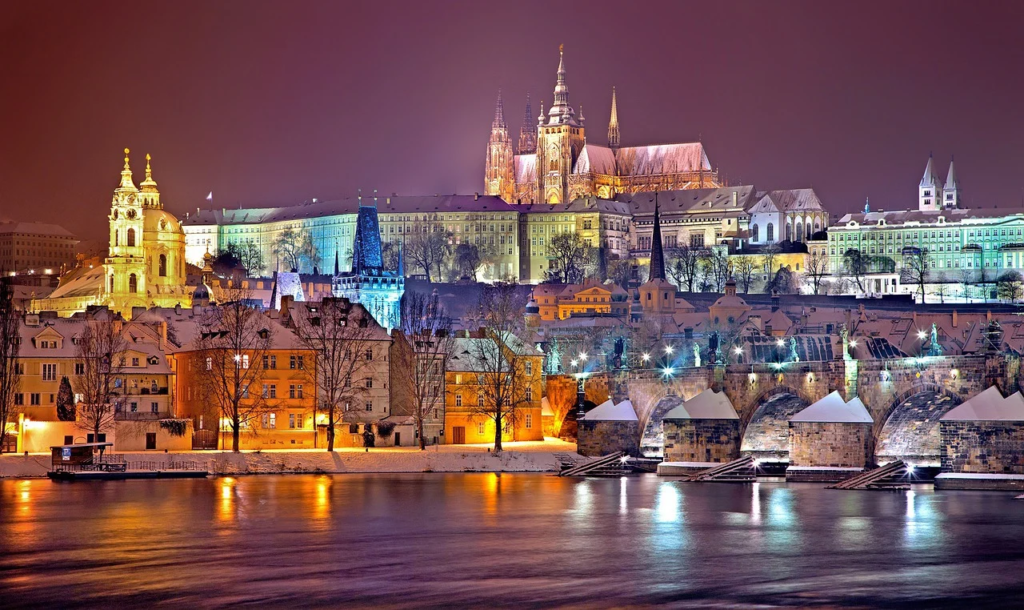
Standing the Tests of Time: Castles Today
Ages of war, conquest, shifting politics, migrations, and turbulence saw the emergence of castles into the lives of peoples across the world. Evolving strategies and weapons witnesses the ever changing nature of these prolific structures from defense, to sites of influence, to status symbols.
Now, castles hold a much more powerful status in the worlds eyes; historical and cultural monuments. As the times of absolute monarchs and nobility faded into a much more liberal world, many castles entered into the realm of the public, open for witness to the greater population.
Today, you can see castles across Europe, the Middle East, and the Americas still standing, bearing the marks and scars of centuries of wars and shifts in power, not to mention their many phases of construction and revival.
Castles have become part of the public consciousness of where we were centuries ago, providing a catalogue of military history, culture, romance, and art. Archeological expeditions have continued to uncover even more sites of older defensive structures, adding even more to that rich catalogue.
Yet, in many ways, we are merely in the midst of another age of castles. It is difficult to determine what the future might hold in terms of how we quantify aspects such as safety, defense, fortification, architecture, and art. Even today, the castle informs so much about how we manifest these ideas in our world, and no doubt in an uncertain future, they will continue to influence how we view them in history, and in the present.
Speaking of medieval things, Matthew has written up a number of articles about all sort of subject. He puts the history in “amateur historian”! Please check out some of his other pieces listed here:
- Dirtbags! a Sci-Fi Shooter RPG: Gameplay Review! - March 23, 2025
- Nerds and Knights: a TTRPG “Nerd Nite” Presentation - February 28, 2025
- Odd Mart Oddities: JP Coovert’s Nintendo-style TTRPG Zines! - January 14, 2025


